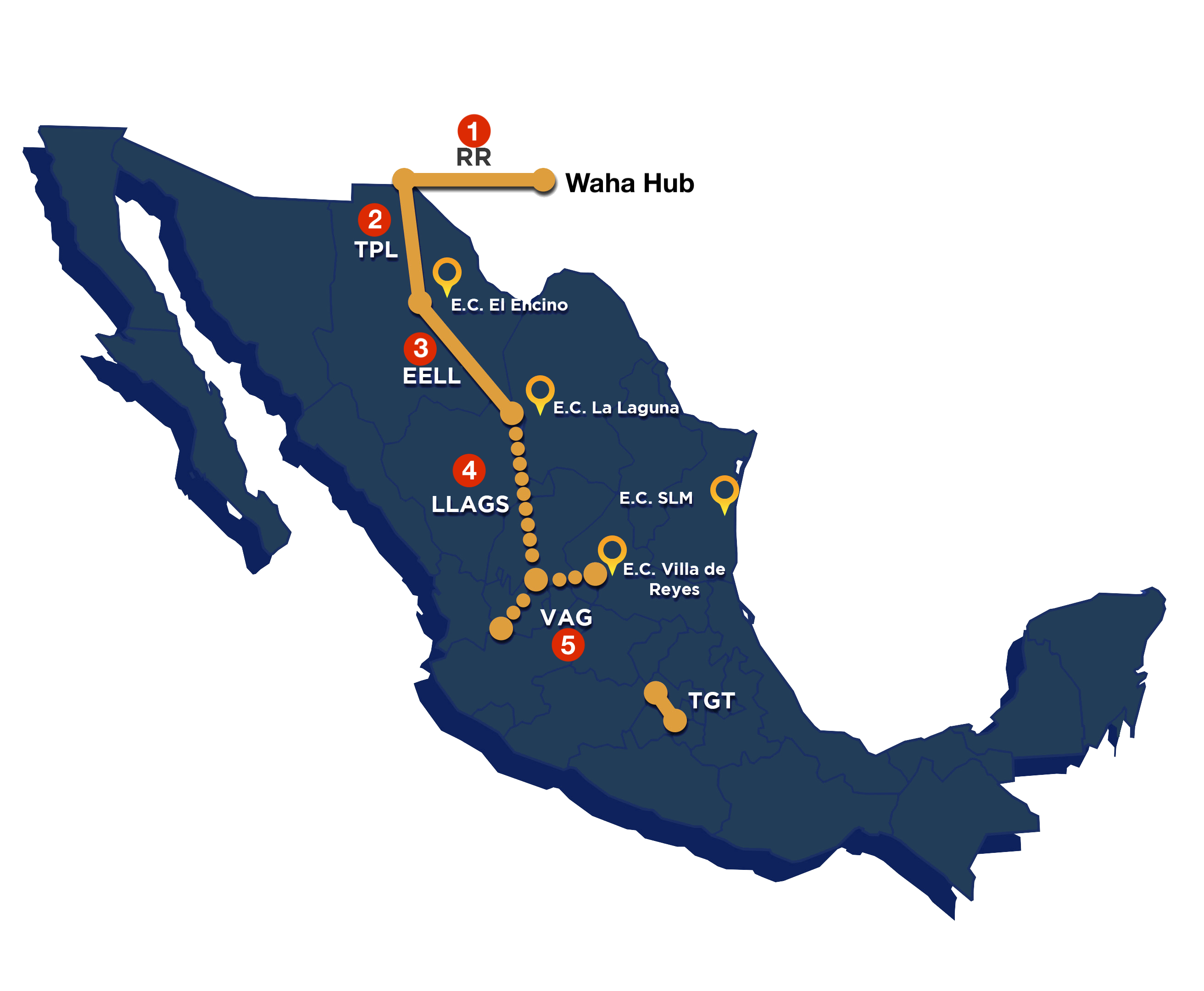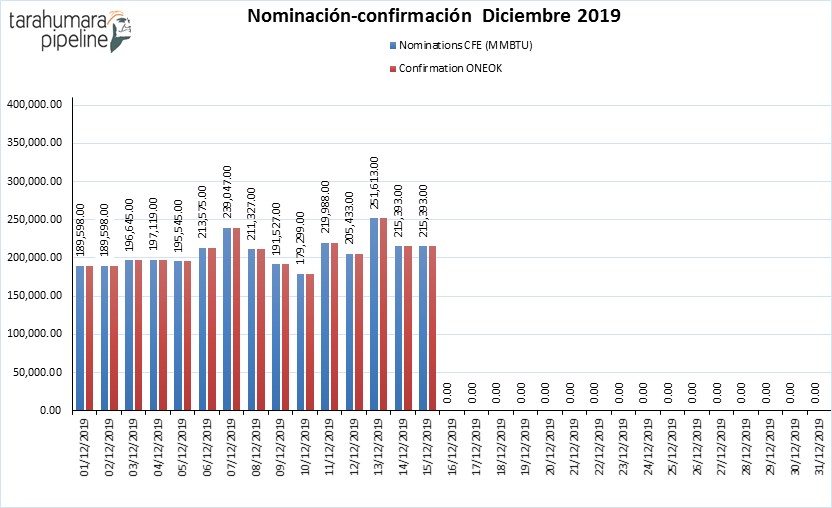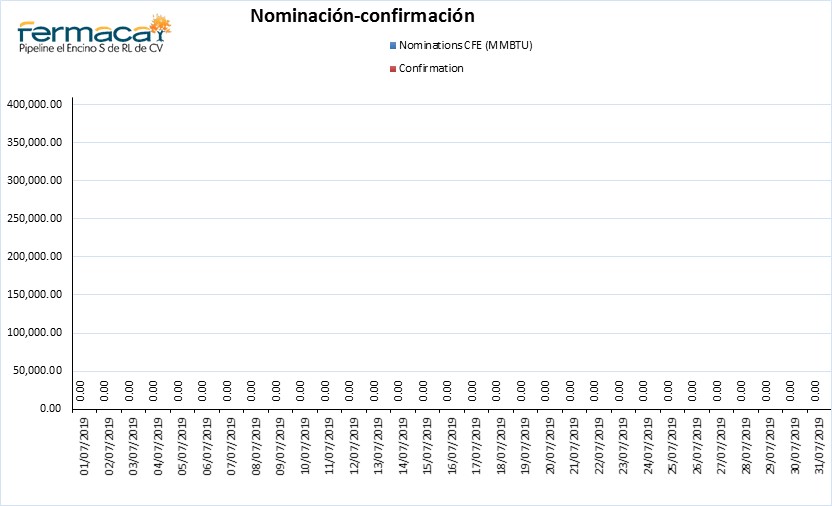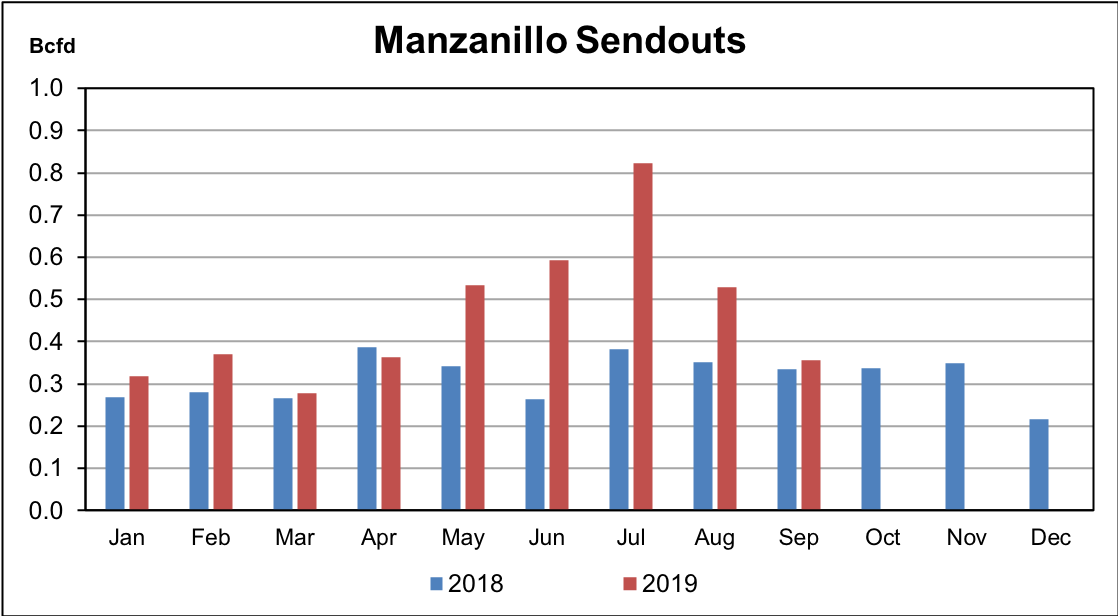Wahalajara pipeline startup
On Tuesday it was reported that Fermaca was launching their second to last pipeline of the so called “Wahalajara” pipeline system. The section is the La Laguna - Aguascalientes, and it has yet to show flows on Fermacas Electronic Dashboard.
In this blog post we’ll take a look at how flows have been impacted and dicuss if the opening of this section will have any impact on flows currently.
Let’s first review the Wahalajara system. Below you’ll see an image from Fermaca that shows the interconnections of the pipeline system.
The flows goes as follows from upstream to downstream:
-
Road Runner
-
Tarahumara
-
El Encino - La Laguna
-
La Laguna - Aguascalientes
-
Villa De Reyes - Aguascalientes - Guadalajara

However, little to no electrical generation exists around Aguascalientes, and thus no new demand should pick up with the startup of this section of the pipeline. It’s not until the next stage (5. in the image above) that we should start seeing incremental demand. These are the generation center for the region.
This is further evidenced by the flows on Tarahumara pipline listed below, which on a normal day swings around 190-200 MMcf/d.

Albeit, we see some volatile swings I assume this is to fill the downstream pipelines and not actual new demand. Evidenced by the “El Encino - La Laguna” pipeline we see no reported flows. (See below)

The main demand driver in Guadalajara will be the new Tierra Mojada plant, a 875 MW plant which works out to roughly 150 MMcf/d in new demand.
Further more the reversal of the TC Energy pipline at Zapotlanejo is will be the biggest downstream demand driver for this pipeline. This will primarily replace the gas sent out by the regasification terminal at Manzanillo.
Manzanillo averages around 300-400 mmcf/d in the cold/shoulder months and up to 800 mmcf/d in the warmer months

In conclusion the opening of La Laguna - Aguascalientes will have little to no impact on current demand, as there really isn’t any generation in Aguascalientes.
I’ll follow up later with a more in depth coverage of how much generation the Wahalajara system can potentially serve and divided into each section of the pipeline.
cheers,
Kristoffer
P.S
Any questions regarding this article can be sent to:
If you have any suggestions for articles feel free to email me.
